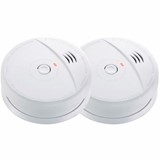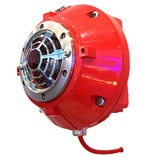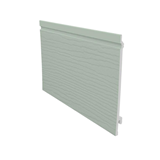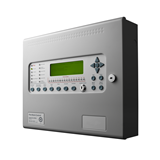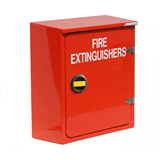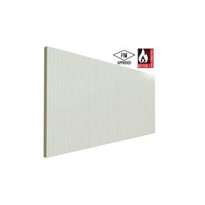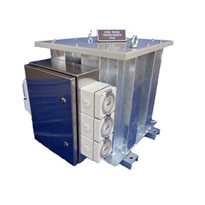Any electrical installations must ensure the integrity of wiring systems during fire incident, especially in Australia, which has a stringent fire safety regulation. The standard governing this aspect is AS/NZS 3013:2005, which specifies the fire resistance and mechanical performance of each element in the wiring systems. Fire-rated enclosures and junction boxes are used to protect the wiring elements and play a crucial role in maintaining circuit integrity to prevent electrical failure during a fire emergency.
Understanding AS/NZS 3013:2005 Standards
The AS/NZS 3013:2005 standard outlines the performance criteria for electrical wiring systems that are subjected to fire. Each cable type is assigned to a wiring system code that defines the cable, representative of its group as defined by AS/NZS 3013:2005, has satisfied the test criteria for that rating.
Below is a summary of the Standard.
AS/NZS 3013.WSX First Numeral = Protection against fire conditions
AS/NZS 3013.WS_X Second Numeral = Protection against mechanical damage
AS/NZS 3013.WS__X Third Letter = Passed Water Spray test requirements
Protection against fire conditions refer back to AS1530.4.2014 Temperature and Time .
Degree of protection indicated by the first characteristic numeral is obtained from the following table. Corresponding temperature is mapped from the relevant standard for easy reference (AS1530.4.2014).
Table-1: Degree of protection indicated by the first characteristic numeral (Protection against fire conditions)
|
First characteristics numeral |
Minimum time for which the test is conducted (min) |
Corresponding temperature (closest match taken) |
|
1 |
15 |
738 |
|
2 |
30 |
841 |
|
3 |
60 |
945 |
|
4 |
90 |
1006 |
|
5 |
120 |
1049 |
Table-2: Degree of protection indicated by the Second Characteristic Numeral (Protection against mechanical damage)
The third numeral signifies whether the junction box or the enclosure can pass Water Spray test. If it passes, the product can include ‘W’ at the end. If it does not pass, the product can’t include ‘W’ at the end.
In most situations, WS42 may be considered suitable as WS42 parameters mimic conditions close to the melting point of copper (1085oC), ensuring that electrical components in the fire rated circuits are protected and remain operational during the fire event. WS42 parameters mean a continuous fire for 90 mins, with a temperature of 1006 oC.
Material selection for Fire rated junction boxes
Selecting the suitable material to build compliant fire-rated enclosure is crucial to ensure that it can withstand high temperature over a continuous period as experienced in a fire emergency. The three most commonly used materials for fire rated junction boxes are:
· Aluminium: Aluminum is the most commonly used material in locally-designed fire-rated enclosures. However, most aluminium-based junction boxes are only rated for two hours at the temperature up to 400oC, which does not meet the AS/NZS fire-rated standard. Aluminium also has a far lower melting point (660oC) than the required test temperature as defined in the AS/NZS 3013:2005 as can be observed in Table-1. Aluminium boxes don’t even meet WS1 rating. Therefore, it does not meet the standard’s fire resistance criteria, although it is lightweight and cost-effective. It should never be used where fire rating compliance is mandatory such as HVAC and emergency systems in critical mass transport infrastructure, large commercial buildings etc.
· Stainless Steel: Stainless steel has an excellent durability and resistant to high temperature. It provides protection up to temperature specified in the standard, but it comes at a significantly higher cost. Although it is an ideal material for designing fire-rated enclosure in high-risk applications, its cost does not provide justification for wider and large-scale applications. However, Stainless Steel can be a suitable option where protection against heavy mechanical damage is required.
· Glass Reinforced Polyester (GRP): GRP is a cost-effective alternative to stainless steel, providing superior fire resistance and mechanical strength. It is also high resistant to corrosion, UV degradation and chemical exposure and is suitable for installation in the harsh environment. Due to its lower maintenance cost and its longer lifespan compared to stainless steel, it provides significant long-term economic advantages for large scale applications. Specially designed GRP boxes can also be Low Smoke and Zero Halogen further enhancing its usefulness for fire-rated applications.
The choice between these materials should balance compliance, safety, and budget considerations. Ensuring that selected materials meet or exceed AS/NZS 3013:2005 standards is essential to maintaining circuit integrity during fire incidents. One must ensure that compliant junction boxes are used to avoid replacement costs because of independent safety audit.
Applications of fire-rated junction boxes in industrial environment
Fire-rated junction boxes are typically installed in industrial environment where maintaining electrical integrity during a fire incident is critical, such as for the protection of critical equipment and infrastructure. Key applications may include:
· Tunnels: Ensuring the functionality of emergency lighting and communication systems during fire incidents is vital for safe evacuation and emergency response.
· Enclosed Spaces: Areas such as basements, lift shafts, and underground mining facility require fire-rated enclosures to protect essential electrical circuits.
· Factories and Industrial Plants: In industrial settings with higher fire risks, fire-rated enclosures safeguard critical electrical systems, preventing operational disruptions and enhancing safety.
Design compliant: What you must not do when designing a fire-rated box?
When procuring a fire-rated enclosure for your applications, it is important to avoid enclosures that does not meet AS/NZS compliance. Installing equipment that do not meet the fire resistance level as specified in the industry standard can lead to system failures during a fire incident. You may also potentially end-up with legal repercussions for ignoring the safety standards.
The manufacturers of the fire-rated enclosures must also ensure that all fire-rated junction boxes are rigorously tested under the simulated fire conditions to ensure long-term reliability. Failure to address these considerations can lead to costly replacements and compromised safety during audits or actual fire events.
One handy tip is – don’t use Aluminium boxes for any fire rated system.
Mitigating risks associated with fire-rated equipment
To mitigate risks associated with fire-rated enclosures:
· Understand relevant standards: Familiarity with AS/NZS 3013:2005 and other pertinent standards is essential for informed decision-making.
· Select compliant product: Choose products that have been tested and certified (ideally locally) to meet the required fire resistance levels.
· Engage certified suppliers: Partnering with reputable suppliers ensures access to products that comply with national and international standards.
· Conduct regular audits: Routine inspections and maintenance help ensure ongoing compliance and functionality of fire-rated enclosures.
Certification Requirements
Ensuring that fire-rated junction boxes have the necessary certifications is crucial for compliance and safety. Useful technical guidance materials include:
· AS/NZS 3013:2005: Specifies the classification of fire and mechanical performance of wiring system elements.
· IEC 60529 (IP Ratings): Defines the degrees of protection provided by enclosures against dust, water, and other environmental factors.
· ISO 1182 & ISO 1716: Relate to non-combustibility and calorific value tests for materials used in enclosures.
· NATA-Accredited Testing Certification: Indicates that the products have undergone rigorous testing by accredited laboratories, ensuring their reliability and compliance.
Fire-rated enclosures are integral to maintaining electrical system integrity during fire incidents in Australia. Compliance with AS/NZS 3013:2005 ensures that these enclosures can withstand extreme conditions, safeguarding both property and lives. By carefully selecting materials, adhering to standards, and obtaining necessary certifications, industries can enhance fire safety and ensure uninterrupted operation of critical electrical systems.


-720x400.jpg)
(ID9616)-720x400.jpg)



